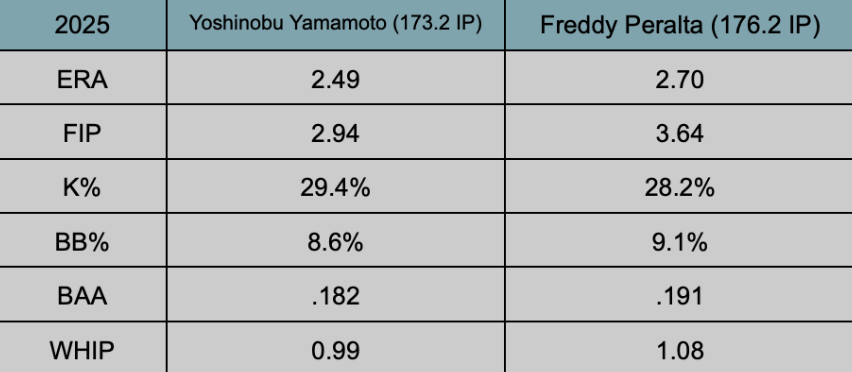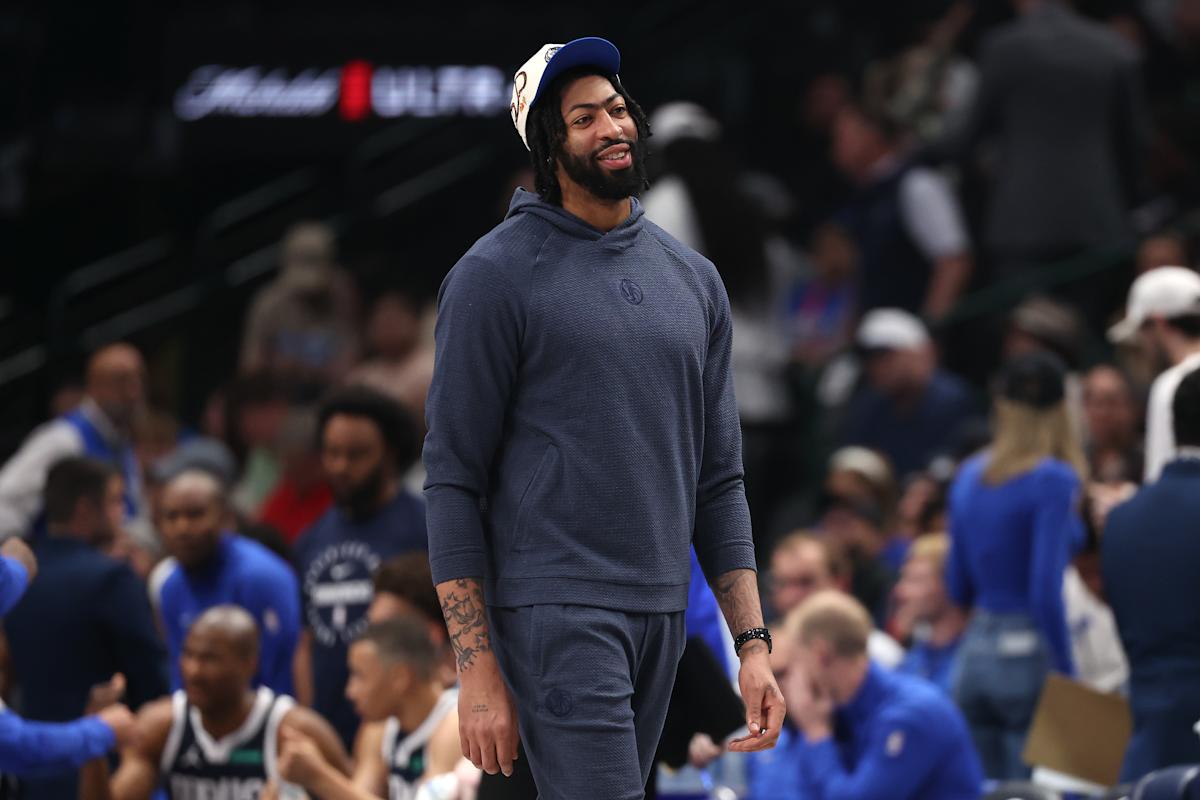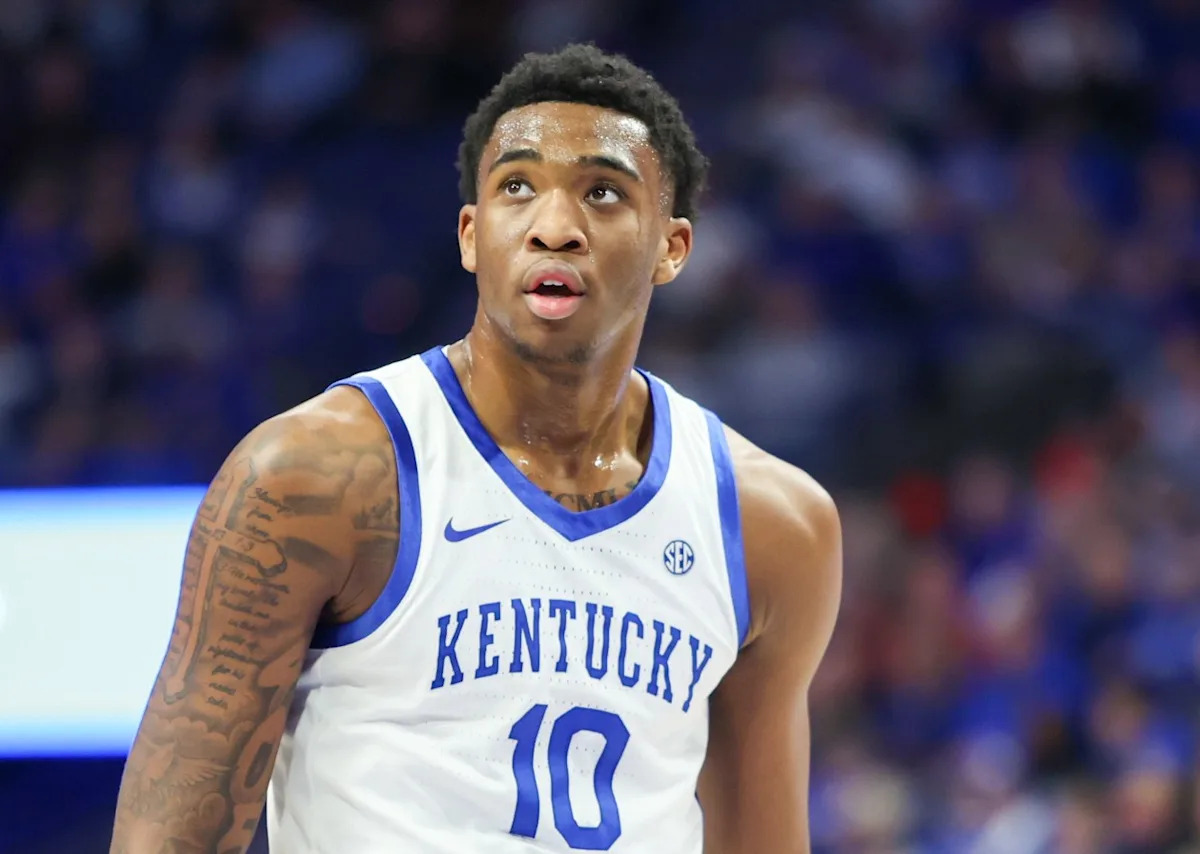Last night turned out great for the Dodgers as they took the first game of the National League Championship Series against the Brewers by a score of 2-1. Blake Snell was as close to perfect as one could be, facing the minimum through eight innings before the bullpen entered the game for three measly outs. Roki Sasaki and Blake Treinen pulled it off, but it was incredibly ugly and the bullpen woes continued.
Chad recapped the entire game, and even though it got very messy at the end, I’ll take any win in the playoffs, no matter how they come. The offense managed just two runs despite creating a ton of opportunities, and they’ll need to be more efficient at taking advantage of those opportunities as they face the Brewers’ ace, Freddy Peralta. Yoshinobu Yamamoto will be on the mound looking to bounce back from his rough outing against the Phillies, up against a Brewers’ offense that roughed him up back in July.


5:08 PM
Milwaukee
DH
Ohtani (L)
RF
Chourio
SS
Betts
2B
Turang (L)
1B
Freeman (L)
C
Contreras
C
Smith
DH
Yelich (L)
3B
Muncy (L)
1B
Vaughn
RF
T. Hernández
CF
Frelick (L)
2B
Edman (S)
3B
Durbin
LF
K. Hernández
LF
Bauers (L)
CF
Pages
SS
Ortiz
P
Yamamoto (R)
P
Peralta (R)
The offense was quite sharp despite never cashing in on any opportunities they created, as they scored just two runs on seven hits and eight walks. It was just the 28th time in the Expansion Era (1961) that a team had 15 or more baserunners in a postseason game and scored two or fewer runs. The Max Muncy double play was two feet from being a grand slam, but ultimately just added to the team tally that was 1-for-10 with runners in scoring position with eleven runners left on base. The Brewers meanwhile had just two hits and three walks, yet were a single away from winning the game. Between Brice Turang moving out of the way of the a game-tying HBP and Muncy’s flyout just finding Sal Frelick‘s glove, it really is a game of inches at times.
The Dodgers will run out the same lineup against the right-handed Peralta, with just a few shifts in the batting order. Freddie Freeman will slide up to third after his two extra-base hit night, while both Will Smith and Muncy slide up in the order. This moves Teoscar Hernández down to sixth, which I don’t necessarily dislike with his streakiness. The aforementioned batters are all more likely to give you quality at-bats, while keeping a high upside power bat in the bottom half of the lineup. Andy Pages is still searching for it, currently in the midst of a 1-for-27 stretch this postseason. He did force the walk-off against the Phillies despite a poorly hit ball, but will remain in the lineup as the Dodgers don’t have another reliable option in center field.
The Brewers will swap Christian Yelich and Turang in the batting order, and bring in Jake Bauers against the right-handed Yamamoto to play left field in place of Isaac Collins. Bauers had a 119 wRC+ against right-handed pitching this year, and had a 1.018 OPS in 59 September plate appearances.
——
Here’s how Snell and Peralta compare.

Yamamoto entered his previous start coming off a gem in Game 2 of the NL Wild Card series against the Reds, where he threw 6.2 scoreless innings en route to the Dodgers advancing to the NLDS. His start in Game 3 of the NLDS against the Phillies didn’t go to plan at all, as he managed just four innings while allowing three earned runs on six hits and one walk with just two strikeouts. His command was off from the start and the Phillies weren’t chasing anything outside of the zone until he established something in the zone, which he struggled to do. The Brewers will likely gameplan the same way, forcing Yamamoto to establish the zone before he can get them to expand it.
He had his worst outing of the season when he faced the Brewers back in July, as they jumped on him early forcing him out of the game after getting just two outs. Most notably, Frelick doubled and Andrew Vaughn homered, while Turang and William Contreras walked. He allowed four hits and two walks, in a similar way to his outing against the Phillies, where he just didn’t have it early. The Brewers will gladly take their walks if you’ll issue them, which has been an issue for Yamamoto at times this year. Separately, the Brewers had the second lowest whiff-rate on splitters this year at just 28.4%, trailing only the Toronto Blue Jays (27.3%), two teams that excel at putting the ball in play.
Peralta has generally been successful against the Dodgers in recent years, with a 3.41 ERA across seven games and 37.0 innings over the last four years. He faced the Dodgers twice this year with mixed results, going six scoreless innings in their first meeting in July, while allowing four runs on five hits and three walks in five innings two weeks later. He’s 1-1 this postseason, with a very good start against the Cubs in Game 1 of the NLDS, followed up by a subpar outing in Game 4, where he allowed three runs in four innings. He has 15 strikeouts in those 9.2 innings, a part of his game he’s always been good at.
He’ll be pitching on four days rest which in theory is regular rest for a starting pitcher, but Peralta performed better this year when he was able to pitch on five days rest instead. He had a 2.59 ERA over 12 starts on four days rest compared to a 2.65 ERA over 17 starts where he had five days rest. The ERA is nearly identical, but the offensive performance against him shows that he was likely receiving better luck or better sequencing to arrive at that ERA. Batters slashed .235/.317/.329 for a .646 OPS against him on four days rest, compared to .170/.257/.339 for a .597 OPS on five days rest. The command and strikeout stuff attest to this as well, with 63 strikeouts to 26 walks over 62.2 innings on four days rest, a ratio of 2.4:1, compared to 116 strikeouts to just 34 walks in 91.2 innings on five days rest, a ratio of 3.4:1. Essentially a long-winded way of saying that he’s better on five days rest and tonight he’ll be pitching on four days.
He sits in the mid-90’s with his four-seam fastball which is his most frequented pitch, but will throw changeups, curveballs, and sliders to both left and right-handed batters to keep them honest. His fastball is essentially where all the damage against him has come from, with 16 home runs allowed on the four-seamer, compared to three on the changeup, two on the curve, and none on the slider. I expect Peralta to throw the fastball much less than the 54% rate he posted in the regular season.
Freddy Peralta had the lowest home ERA of any qualified starter during the regular season (1.77).
Yoshinobu Yamamoto had the lowest road ERA of any qualified starter (2.13).
The two aces face off tonight in Game 2 of the #NLCS 🔒 pic.twitter.com/P19JyddtGF
— MLB Network (@MLBNetwork) October 14, 2025
Should be a great matchup between two of the better pitchers in the sport this year.
——
This order makes sense, as it keeps Tyler Glasnow theoretically available on regular rest for a Game 7, should they need him.
——
The closing/high-leverage role came upon Sasaki so quickly that everyone understandably is relatively uncertain about his ability to be pitch at the same frequency as regular relievers.
======
First pitch is at 5:08 PT on TBS and HBO Max.






















